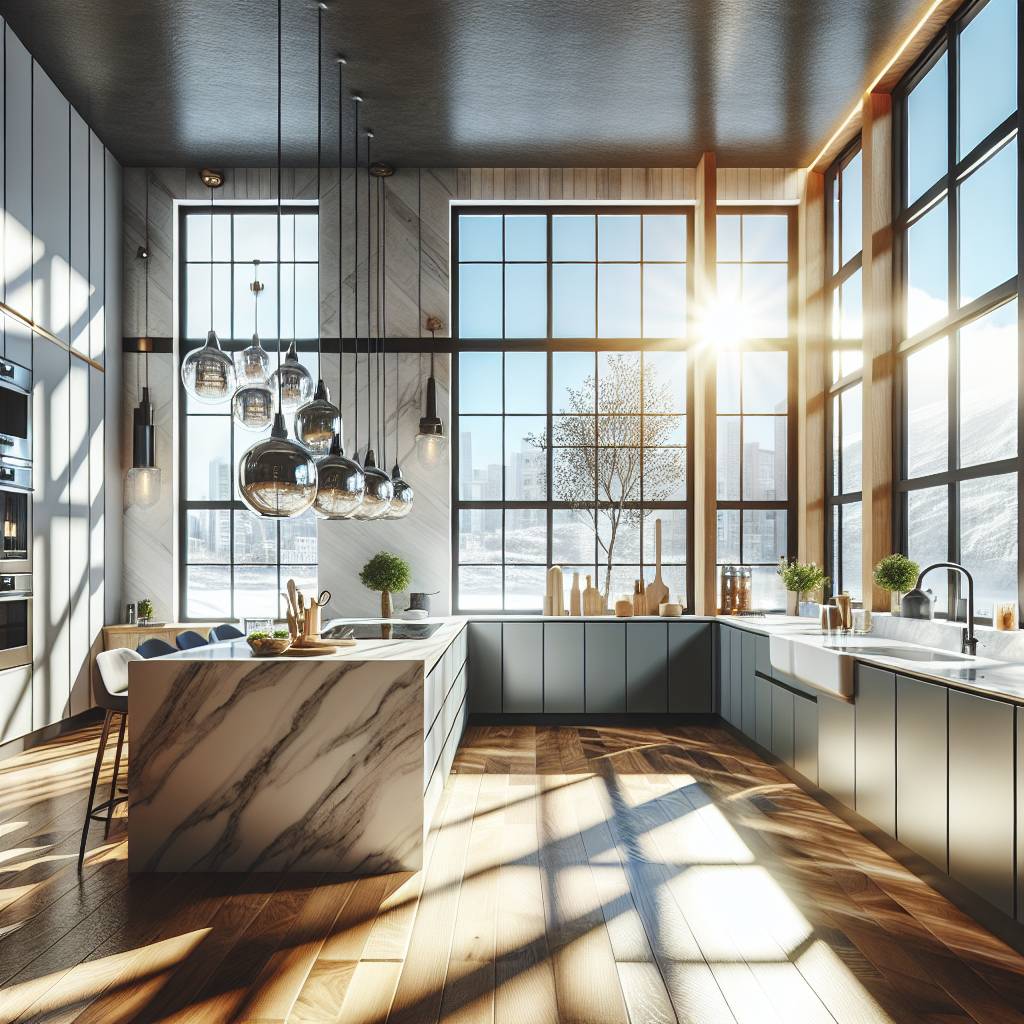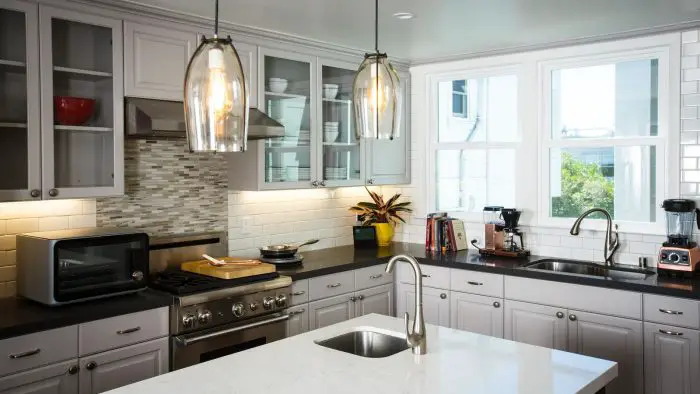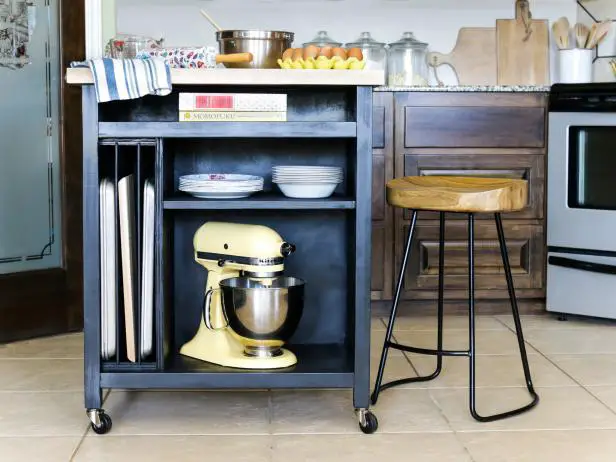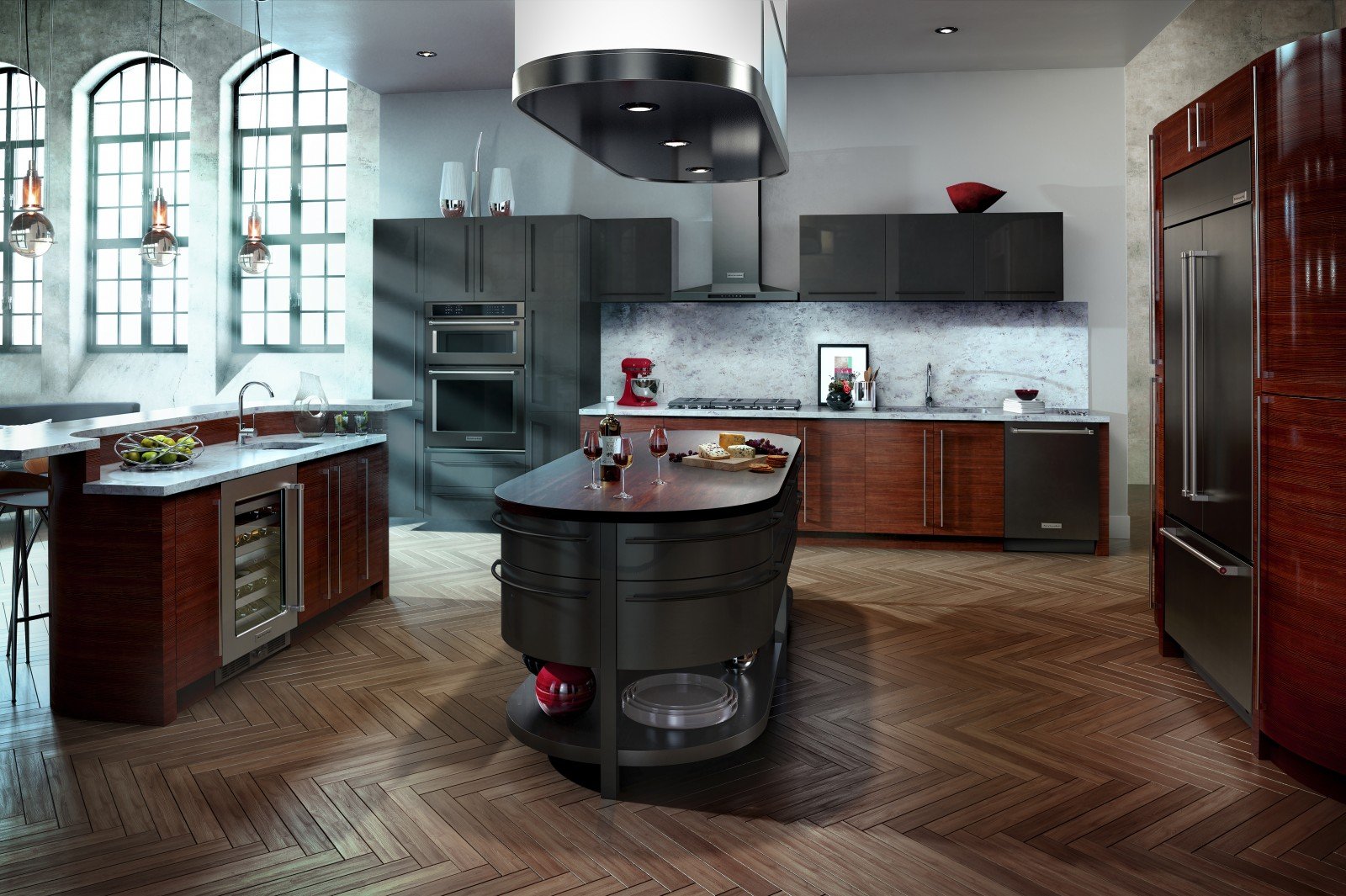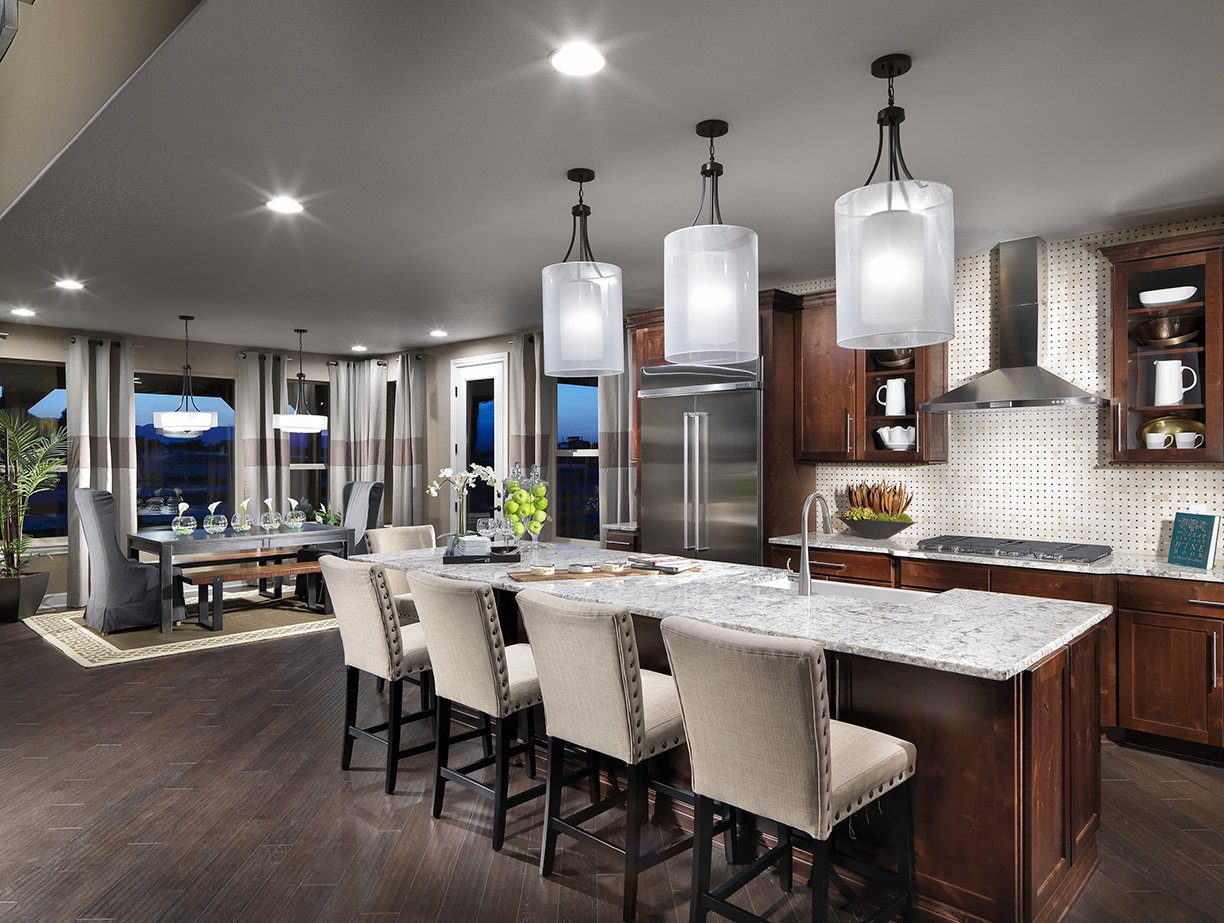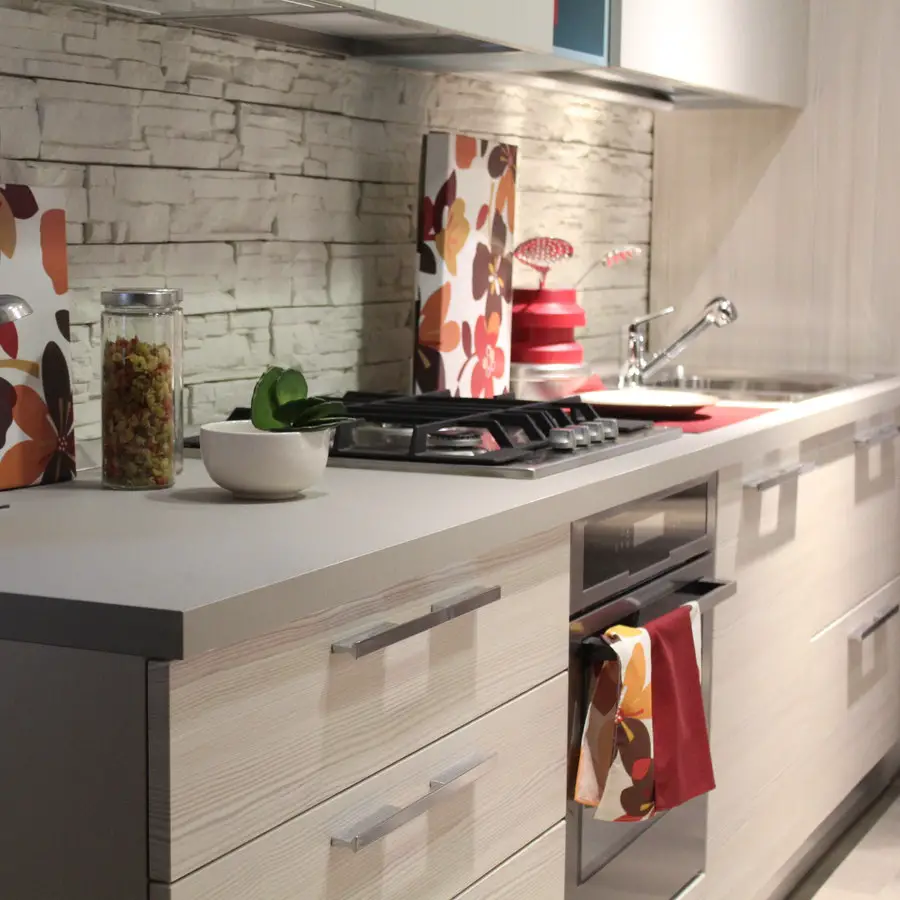Creating a kitchen that maximizes natural light is like adding a splash of freshness to your cooking space. The interplay between sunlight and the designer can transform your kitchen into an inviting, vibrant hub. Imagine basking in the warm glow of morning light as you brew your coffee, or relishing the golden hour’s radiance while preparing dinner – it’s about infusing energy and warmth into every culinary moment.
In this post, we’ll delve into practical tips for harnessing natural light to elevate your kitchen design. From strategic window placements to reflective surfaces, we’ll explore how simple adjustments can make a world of difference. Let’s unlock the potential of natural light and illuminate your kitchen with brilliance.
Key Takeaways
- Maximizing natural light in kitchen design is crucial for creating a bright, inviting, and energy-efficient space.
- Assess sunlight conditions in your kitchen to determine the best window placement and style for optimal natural light.
- Strategically place windows to capture the most sunlight throughout the day, especially during morning and late afternoon hours.
- Consider using specific glass types, such as low-e or tinted glass, to enhance energy efficiency and control light transmission.
- Incorporate skylights and light wells to introduce additional natural light sources and create a more expansive feel in the kitchen.
- Utilize circadian lighting to mimic natural light patterns and support a healthy, balanced lifestyle.
The Importance of Natural Light
Health Benefits
Natural light has numerous health benefits. It promotes the production of vitamin D, which is essential for maintaining healthy bones and a strong immune system. Exposure to natural daylight also enhances mood and mental well-being, contributing to overall emotional wellness. It supports a healthy circadian rhythm, helping regulate sleep patterns and ensuring better rest at night.
A kitchen flooded with natural light can significantly impact the health and well-being of individuals who spend time in that space. For example, when preparing meals or enjoying family gatherings in a kitchen filled with sunlight, individuals are more likely to experience improved moods and feel energized due to exposure to natural daylight.
Aesthetic Appeal
In addition to its health benefits, maximizing natural light in kitchen design offers significant aesthetic advantages. Sunlight creates a sense of spaciousness within the kitchen area by eliminating shadows and dark corners. Furthermore, it highlights architectural details and design elements such as countertops, backsplashes, or cabinetry, adding depth and visual interest to the space.
Imagine a kitchen bathed in warm sunlight streaming through large windows or skylights; this not only makes the room feel more inviting but also accentuates various design features like sleek countertops or intricate tile work on backsplashes.
Energy Efficiency
Another crucial aspect of maximizing natural light in kitchen design is its contribution to energy efficiency. By relying on sunlight during the day instead of artificial lighting fixtures, homeowners can reduce their reliance on electricity-powered lights. This reduction translates into lower overall energy consumption within households while simultaneously contributing towards sustainable living practices.
For instance, integrating strategically placed windows or utilizing translucent materials for cabinet doors allows kitchens to be illuminated primarily by natural daylight throughout most hours of the day without needing additional electric lighting sources.
Assessing Sunlight Conditions
Assessing sunlight conditions is crucial. The orientation of the kitchen plays a significant role in determining the amount of natural light it receives. Consider the position of the kitchen concerning the sun’s path. A kitchen with windows facing east will receive abundant morning light, while a west-facing one will benefit from afternoon sunlight.
To optimize natural light based on the kitchen’s layout, strategically place windows or skylights to ensure consistent daylight throughout the day. This may involve repositioning certain elements within the space to allow for better distribution of sunlight. For example, if there are tall cabinets blocking potential window areas, consider relocating them to free up space for more extensive windows or additional openings.
Identifying potential obstructions such as neighboring buildings or trees is essential when analyzing natural light flow in a kitchen. These obstructions can significantly impact how much sunlight enters the space and at what times of day. By understanding how these obstacles affect natural light flow, you can determine suitable solutions to minimize their effects and enhance overall brightness within your kitchen.
Assessing how obstructions may impact natural light flow involves observing shadow patterns cast by nearby structures or vegetation at different times of day. This analysis helps pinpoint specific areas where direct sunlight is obstructed and allows for informed decisions regarding adjustments that can be made to mitigate these effects.
Determining solutions to minimize obstruction effects could include trimming overhanging tree branches, installing reflective surfaces near windows to bounce more light into the room, or even considering architectural changes such as adding a clerestory window above an obstruction for added illumination.
Window Placement Strategies
Optimal Locations
Identifying the ideal areas for maximum light entry is crucial. Consider placing windows, skylights, or other openings strategically to ensure optimal exposure to natural light. For instance, positioning windows on the south side of a house can provide consistent sunlight throughout the day. Evaluate how different locations affect the overall lighting balance in your kitchen space. This evaluation helps determine which areas receive more natural light and where additional sources may be necessary.
In addition to window placement, consider incorporating skylights into your kitchen design if feasible. Skylights are an excellent way to introduce additional natural light from above, creating a bright and airy atmosphere within the kitchen. By assessing various options for window and opening placements, you can make informed decisions about maximizing natural light while maintaining a well-balanced lighting scheme.
Size Considerations
Determining the appropriate size of windows or openings is essential for ensuring sufficient natural light enters your kitchen space. Balance this decision with privacy needs and wall space requirements by choosing window sizes that allow ample sunlight while preserving privacy and accommodating functional wall layouts. Larger windows may offer more daylight but could compromise storage or counter space along walls.
For example, when planning window sizes, take into account any nearby structures or landscaping that might obstruct incoming sunlight at certain times of day. Ensuring adequate coverage of natural light across the entire kitchen area is vital for creating a welcoming environment with ample illumination during daytime hours.
Window Style Selection
Frame Materials
The choice of window frame materials plays a crucial role. The frame materials should not only complement the kitchen’s aesthetic but also offer durability, low maintenance, and good insulation properties. For instance, wood frames can add warmth and character to the kitchen while providing excellent insulation. On the other hand, aluminum frames are durable and low-maintenance, making them suitable for modern kitchens with an industrial or minimalist aesthetic. vinyl frames are known for their affordability and resistance to moisture, making them ideal for kitchens with high humidity levels.
Exploring these options allows homeowners to select window frame materials that align with both their preferred style and practical requirements.
Opening Mechanisms
Choosing the right opening mechanisms for windows is essential not only for controlling ventilation but also for effectively managing natural light in the kitchen. Evaluating various window opening styles enables homeowners to find mechanisms that suit their specific needs. For example, considering practicality and ease of use when selecting different opening mechanisms ensures that they align with the functionality and design of the kitchen.
Some common opening mechanisms include casement windows that provide excellent ventilation when opened fully outward, allowing maximum airflow into the kitchen space. Alternatively, sliding windows offer a sleek look while enabling easy operation in compact kitchens where outward-opening windows may not be feasible.
Glass Types for Light and Energy
The choice of glazing types plays a crucial role. Various glazing options offer different levels of light transmission and insulation. For instance, clear glass allows ample natural light to enter the kitchen, while tinted or reflective glass reduces glare and heat gain.
UV filtering is an essential consideration when selecting glazing for the kitchen. Prioritizing UV-filtering properties helps protect interior surfaces and furnishings from sun damage. This is particularly important as excessive UV exposure can lead to fading of cabinets, countertops, and flooring materials over time.
Considering factors such as UV protection, heat gain reduction, and glare control is vital when choosing glazing options for maximizing natural light in the kitchen. By selecting appropriate glazing that suits the specific lighting needs of the kitchen space, homeowners can ensure a well-lit environment without compromising on energy efficiency or indoor comfort.
Glazing Options
Exploring different glazing types provides homeowners with various choices tailored to their specific requirements. Clear glass offers maximum light transmission but may result in increased heat gain during sunny days. On the other hand, low-e coated glass provides excellent insulation by minimizing heat transfer while allowing abundant natural light into the space.
Tinted glass effectively reduces glare by limiting visible transmittance without compromising daylight entry. Reflective coatings on glass help minimize solar heat gain by reflecting a portion of sunlight away from the building’s interior while still permitting sufficient daylight penetration.
By carefully evaluating these glazing options based on their unique features related to light sources, homeowners can select an option that best balances their desire for abundant natural light with considerations for energy efficiency and visual comfort.
UV Filtering
Prioritizing UV-filtering properties in selected glazing helps safeguard interior surfaces from sun-induced damage while maintaining optimal lighting conditions within the kitchen space. Minimizing UV exposure not only preserves food quality but also contributes to maintaining a comfortable ambiance throughout the day.
Ensuring effective UV protection without compromising natural light entry enables homeowners to create a well-lit yet protected environment where they can enjoy both ample daylight illumination and long-lasting preservation of interior finishes.
Incorporating Skylights and Light Wells
Strategic window placement is crucial. By positioning windows thoughtfully, you can flood your kitchen with sunlight while maintaining privacy. Consider sightlines from adjacent rooms when deciding where to place windows. Corner and transom windows are excellent options for increasing light penetration without compromising privacy.
The size and shape of your windows play a significant role in optimizing natural light distribution. It’s essential to choose window shapes that allow maximum light into the space. Avoid over-sizing or under-sizing the windows relative to the kitchen area, as this can impact both aesthetics and functionality negatively.
Incorporating skylights and light wells into your kitchen design can significantly enhance natural lighting. Skylights are an excellent way to introduce additional sunlight into your living spaces, especially in areas where traditional windows may not be feasible due to limited wall space or privacy concerns.
Utilize corner and transom windows for increased light penetration Consider sightlines from adjacent rooms when determining window placement Choose suitable window shapes for optimal light distribution Avoid over-sizing or under-sizing windows relative to the kitchen space Balance aesthetics with functionality when choosing window sizes and shapes
Enhancing Light Quality
Reflective surfaces play a crucial role in maximizing natural light within your kitchen. By incorporating glossy finishes on cabinets or countertops, you can significantly enhance the diffusion of natural light. These reflective surfaces bounce and spread the incoming light, brightening up the entire space. Strategically placing mirrors in your kitchen can further amplify the effect of natural light. Placing a mirror opposite a window or near a skylight will help to reflect and disperse sunlight throughout the room.
Opting for lighter colors is essential in amplifying natural light. Lighter hues such as whites, creams, or pastels serve to maximize the brightness within the space by reflecting more light around. Furthermore, utilizing paint finishes with reflective properties can effectively bounce natural light across various surfaces in your kitchen. Contrasting colors can also be used thoughtfully to create depth and dimension while working with natural light.
Incorporating reflective surfaces into your kitchen design offers numerous benefits:
- Enhanced diffusion of natural light
- Brightened ambiance within the space
- The illusion of an expanded area due to increased brightness
On the other hand, there are some drawbacks that should be considered:
- Maintenance may be required to keep glossy finishes clean and free from smudges
- Overuse of mirrors might create unwanted glare if not strategically placed
Balanced Illumination Techniques
Integrating artificial lighting is crucial. Task lighting, such as under-cabinet lights or pendant fixtures, can complement natural light sources by providing focused illumination where needed. For instance, installing under-cabinet LED strips can help illuminate countertops for food preparation while the sun’s angle changes throughout the day.
Dimmers are also essential for adjusting artificial lighting based on natural light levels. This allows you to reduce the intensity of artificial lights when there’s an abundance of sunlight streaming into your kitchen through windows or skylights. By doing so, you not only save energy but also maintain a balanced and comfortable level of illumination in your kitchen.
In addition to task lighting and dimmers, incorporating ambient lighting plays a vital role in enhancing overall illumination in the kitchen. Examples include recessed ceiling lights or wall sconces that provide general brightness across the entire space. Ambient lighting helps fill in any remaining dark areas and ensures that there are no stark contrasts between spaces with abundant natural light and those without.
Implementing smart controls for automated adjustment of artificial lighting based on natural light availability is key to effective daylighting controls within a kitchen environment. These controls allow seamless transition between natural and artificial lighting throughout the day, ensuring consistent illumination levels regardless of external conditions.
Utilizing sensors further optimizes energy efficiency by syncing artificial lighting with daylight levels. For example, motion sensors can detect when someone enters the kitchen during daytime hours and automatically adjust artificial lights accordingly. This not only saves energy but also provides convenience by eliminating manual adjustments.
Specialty Design Features
Incorporating specialty features can significantly enhance the overall brightness and warmth of the space. One effective way to achieve this is by integrating light shelves into the kitchen environment. These are essentially ledges or shelves strategically positioned near windows to reflect sunlight deeper into the room. By carefully selecting materials with high reflectivity, such as polished metal or glossy finishes, these shelves can optimize the performance of natural light diffusion.
When considering ways to maximize daylight penetration, it’s crucial to position these shelves at strategic heights near windows. This placement ensures that sunlight is efficiently directed into different areas of the kitchen throughout various times of day. For instance, placing a light shelf slightly above eye level can help disperse sunlight across countertops and cooking surfaces, creating a well-lit workspace for meal preparation.
Another innovative approach to harnessing natural light in kitchen design involves implementing sun tracking systems. Advanced sun-tracking technology offers dynamic control over sunlight penetration throughout the day by adjusting motorized shading systems based on the sun’s position. By evaluating and integrating motorized shading solutions equipped with solar tracking capabilities, homeowners can not only enhance energy efficiency but also regulate and optimize natural illumination within their kitchens.
In addition to enhancing interior aesthetics through increased brightness and warmth, maximizing natural light in kitchen design holds numerous benefits for homeowners.
- Pros:
- Creates an inviting ambiance
- Reduces reliance on artificial lighting
- Enhances visual appeal of interior spaces
- Cons:
- Potential for increased heat buildup during warmer months
Circadian Lighting in Kitchens
Light Temperature
Selecting the right light temperature is crucial. Opt for bulbs with a color temperature that complements natural daylight. For instance, choose adjustable color temperature fixtures to create versatile lighting moods throughout the day.
Balance warm and cool tones in artificial lighting to harmonize with natural daylight. This ensures a seamless transition between natural and artificial light, creating an inviting ambiance in your kitchen. By blending these tones effectively, you can enhance the overall aesthetic appeal of your kitchen space.
Timing and Control
To align artificial lighting with daylight hours, utilize timers or scheduling features for your kitchen lighting. This approach ensures that your kitchen’s illumination adjusts according to the time of day, providing optimal brightness levels when needed.
Implement zoning controls within your kitchen to customize artificial lighting based on specific areas. For example, brighter lights over food preparation areas can aid visibility while cooking, while softer ambient lighting may be more suitable for dining areas within the same space.
Ensure seamless coordination between artificial lighting timing and available natural daylight by integrating smart home technology or sensors into your kitchen design. This allows for automatic adjustments based on changing external light conditions throughout the day.
Closing Thoughts
You’ve now gained valuable insights into maximizing natural light in kitchen design. By understanding the significance of natural light, assessing sunlight conditions, and strategically selecting window styles and glass types, you can create a well-lit and inviting kitchen space. Incorporating skylights, enhancing light quality, and implementing balanced illumination techniques further elevate the ambiance. Don’t forget to explore specialty design features and consider circadian lighting for a holistic approach to illuminating your kitchen.
Now it’s time to put these ideas into action. Take a critical look at your kitchen space, assess the natural light opportunities, and start planning how you can implement these strategies. Whether it’s rearranging furniture to allow more light or installing new windows or skylights, maximizing natural light in your kitchen can truly transform the heart of your home. Your well-lit kitchen awaits!
Frequently Asked Questions
How can I maximize natural light in my kitchen design?
To maximize natural light, consider assessing sunlight conditions and strategically placing windows. Selecting the right window style and glass type can also enhance natural light. Incorporating skylights, using balanced illumination techniques, and integrating circadian lighting can further optimize natural light in your kitchen.
What are some effective window placement strategies for maximizing natural light in a kitchen?
Strategic placement of windows is crucial for maximizing natural light. Consider positioning windows on south-facing walls to capture more sunlight throughout the day. Installing larger windows or adding additional windows can help increase the amount of incoming natural light.
Which types of glass are best for optimizing both natural light and energy efficiency in a kitchen?
For optimal results, consider using low-emissivity (Low-E) glass as it helps control heat transfer while allowing ample daylight into the space. Another option is spectrally selective glass that allows high levels of visible light transmission while blocking unwanted solar heat gain.
How can I enhance the quality of natural light in my kitchen design?
Enhancing the quality of natural light involves utilizing balanced illumination techniques such as layering different sources of artificial lighting with daylight to create a harmonious blend. This approach ensures that your kitchen receives consistent and pleasant illumination throughout various times of day.
What role does circadian lighting play in kitchen design for maximizing natural light?
Circadian lighting mimics changes in outdoor daylight to support our body’s internal clock. By integrating circadian-friendly lighting solutions into your kitchen design, you can create an environment that promotes well-being by providing appropriate levels and colors of illumination based on time-of-day cues.
